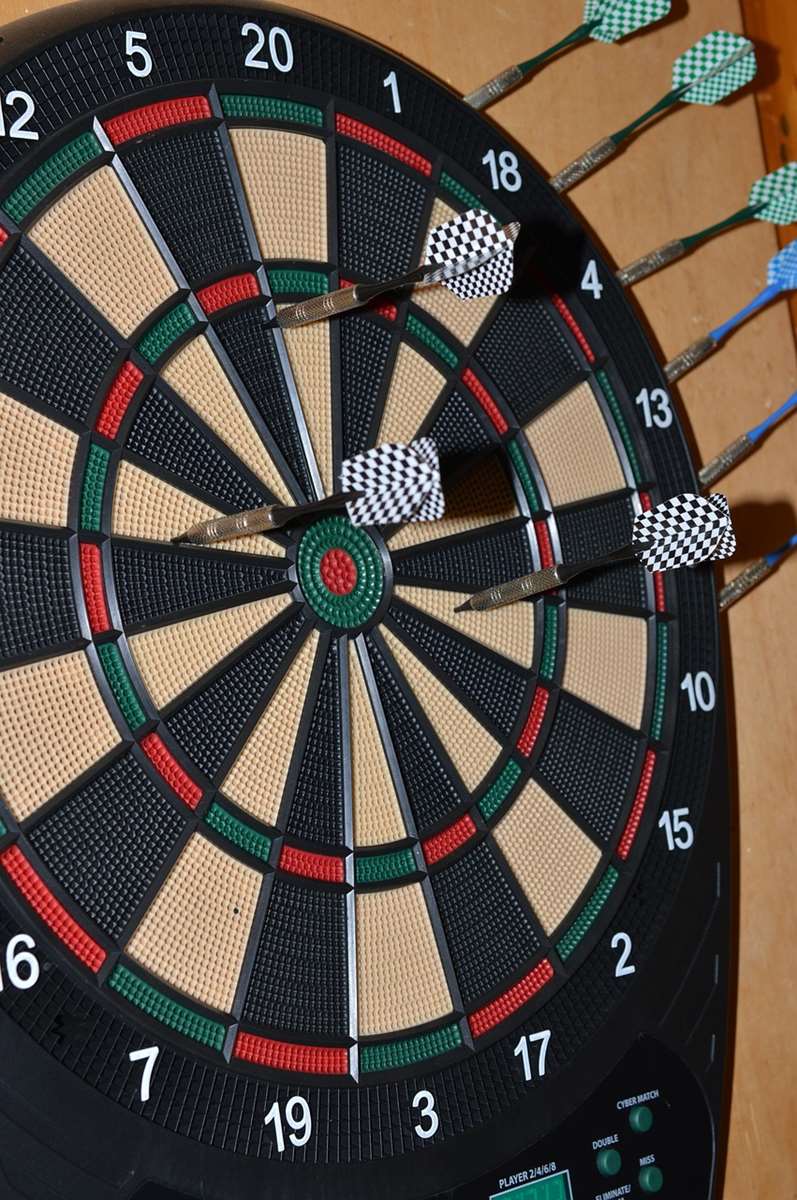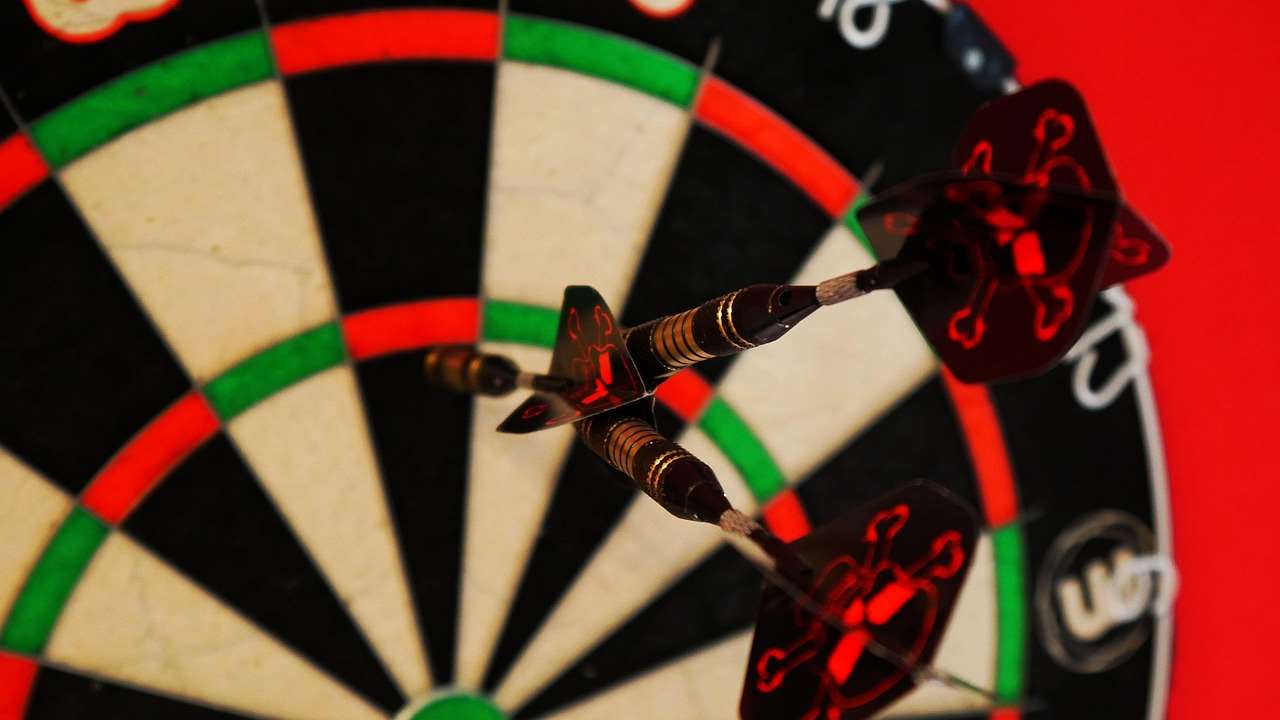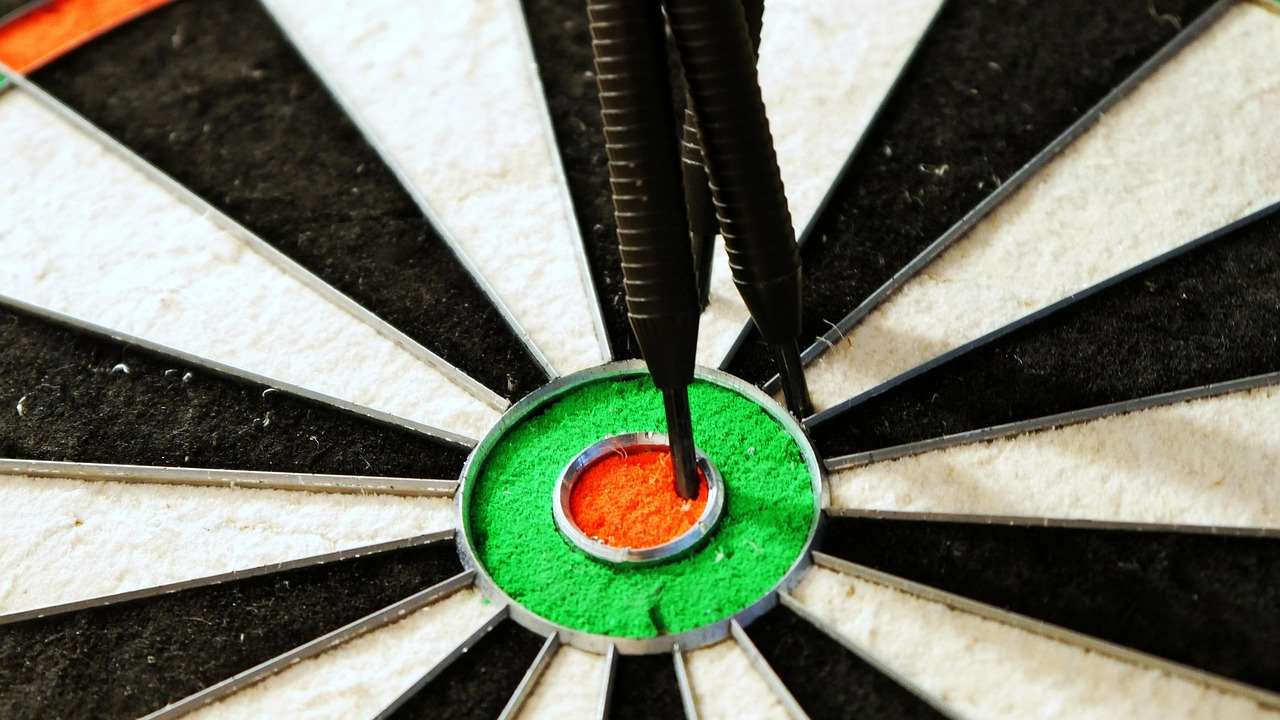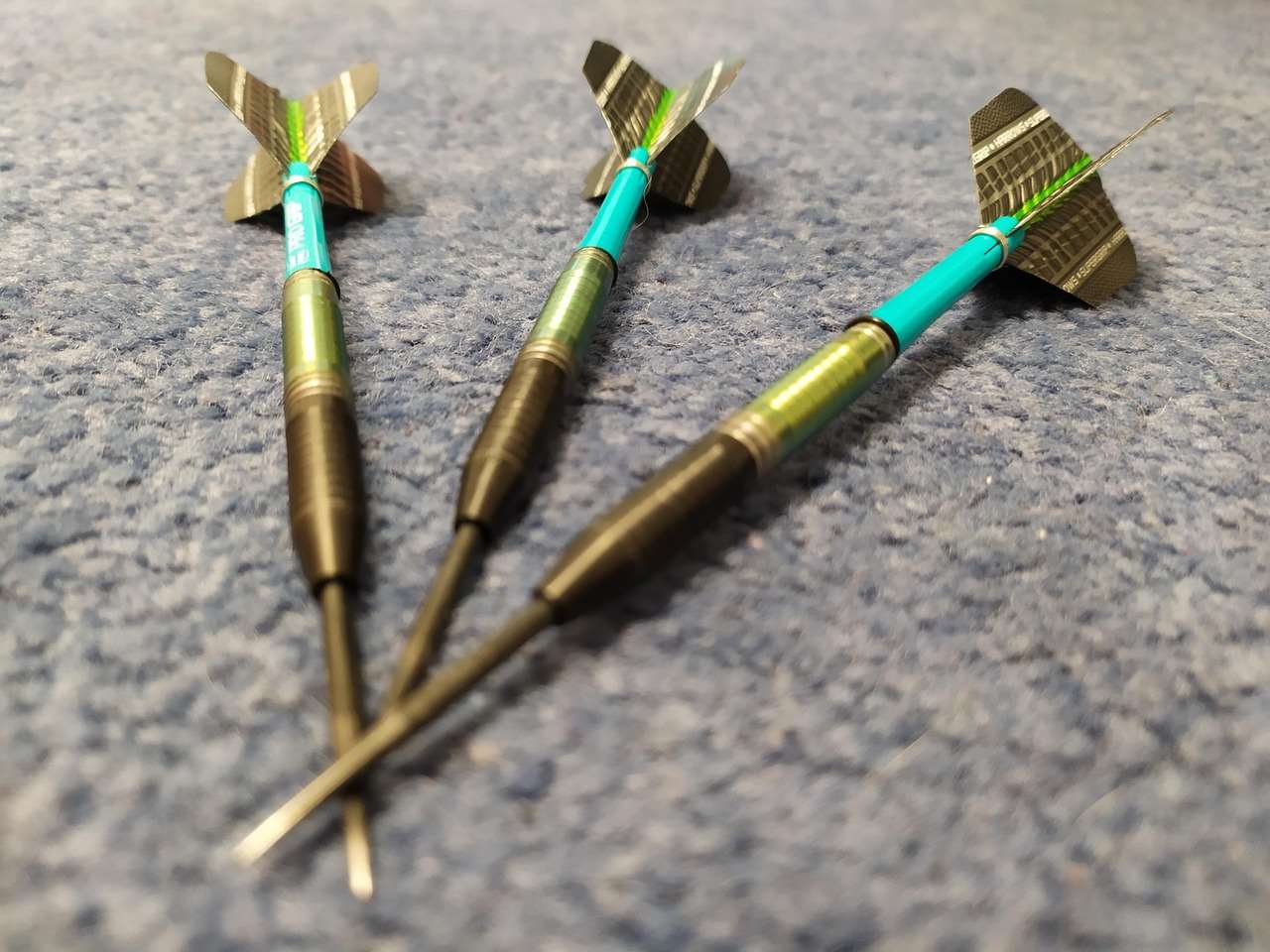Figuring out how to level the playing field in games like darts often involves navigating a world of **complex handicap systems**. These systems aim to make games enjoyable for players of all skill levels, turning mismatches into exciting competitions. This article dives deep into the most common and effective handicap methods, providing you with the knowledge to implement them in your next game of darts.
⚠️ Still Using Pen & Paper (Of een schoolbord)?! ⚠️
Stap in de toekomst! De Dart Teller -app behandelt alle scoren, stelt kassa voor, en volgt uw statistieken automatisch. It's easier than you think!
Probeer de Smart Dart Teller -app gratis!Klaar voor een upgrade? Klik hierboven!
Why Use Handicap Systems in Darts?
Before we delve into the specifics of different handicap methods, it’s important to understand why they are so vital in games like darts. The primary reason is to bridge the skill gap between players. Without a handicap, a highly skilled player will consistently dominate a novice, leading to frustration and a lack of engagement for everyone involved. A well-implemented handicap system allows players of varying abilities to compete on a more equitable basis, fostering a more enjoyable and competitive environment. This is especially important in social settings where the goal is to have fun and encourage participation.
Handicaps can also serve as a powerful tool for **motivating less experienced players**. By giving them a fighting chance, handicaps encourage them to practice, improve, and continue playing. This creates a positive feedback loop where players feel rewarded for their efforts, even if they’re not yet at the same level as their more experienced counterparts. When thinking about Making darts games fair players is paramount to promoting continued enjoyment.
Uiteindelijk, the goal of a handicap system is to create a fair and engaging competition for all participants. This is achieved by adjusting the rules, scoring, or starting positions to level the playing field, allowing everyone to feel like they have a realistic chance of winning.
Popular Handicap Methods Explained
Several different handicap methods can be used in darts, each with its own advantages and disadvantages. The best approach will depend on the specific skill levels of the players involved and the desired level of complexity. Here are some of the most popular and effective handicap methods used in darts games:
Score Adjustment
One of the simplest and most common handicap methods is to adjust the starting score or the target score for each player. This approach is easy to understand and implement, making it a great choice for casual games. Bijvoorbeeld, in a standard game of 501, the less experienced player might start with a score of 521 or have to reach a target score of 401, while the more skilled player still starts at 501.

Another variation is to adjust the number of points required to win a leg or a match. The weaker player might only need to win a certain number of legs to be declared the winner, while the stronger player needs to win more. This method provides a clear and tangible advantage to the less skilled player, making it easier for them to achieve victory.
Extra Lives or Mulligans
This handicap method is particularly useful for beginners who are still learning the basic mechanics of the game. Giving a less experienced player “extra lives” of “mulligans” allows them to miss a throw or two without penalty. Bijvoorbeeld, the weaker player might be allowed to replay a missed dart, while the stronger player must accept their initial throw. This helps to mitigate the impact of occasional misthrows, giving the less skilled player more opportunities to score.
Another approach is to give the weaker player a certain number of “veto” throws, allowing them to discard a particularly bad score and try again. This can be especially helpful in preventing frustration and maintaining engagement, particularly when dealing with players who are prone to making frequent errors.
Target Area Modification
Instead of changing the score itself, you can modify the target area for each player. Bijvoorbeeld, the less experienced player could only need to hit the outer ring to score, while the stronger player must aim for the double or triple ring. This reduces the pressure on the less skilled player to be incredibly precise, making it easier for them to score points.
Alternatively, you could grant the less experienced player a bonus for hitting certain areas of the board. Bijvoorbeeld, hitting the bullseye might be worth double points for the weaker player, while remaining at its standard value for the stronger player. This incentivizes the less skilled player to aim for high-scoring areas, while also creating a more exciting and unpredictable game.
Throwing Distance Adjustment
Altering the throwing distance is another effective way to handicap a game of darts. The less experienced player can stand closer to the dartboard, making it easier to hit their target. Omgekeerd, the more skilled player can stand farther back, increasing the difficulty of their throws. This method directly impacts the physical challenge of the game, providing a clear and measurable advantage to the less skilled player.

This can be easily implemented by marking different throwing lines on the floor, indicating the appropriate distance for each player. The distance can be adjusted based on the specific skill levels of the players involved, ensuring a fair and balanced competition. Remember to measure the distance accurately to maintain fairness.
Complex Handicap Systems Explained: Using Averages
For more competitive and data-driven players, a more **complex handicap system** based on player averages can be implemented. This approach involves calculating each player’s average score per dart or per round and then using this average to determine an appropriate handicap. Dit Handicap system fun dart games should be fair to all.
Bijvoorbeeld, if one player averages 60 points per round and another player averages 40 points per round, the handicap could be adjusted to give the weaker player a 20-point head start in each round. This ensures that both players have an equal opportunity to win, based on their demonstrated skill level.
While this method requires more effort to set up, it provides a more accurate and nuanced handicap, taking into account the specific performance of each player. It also encourages players to track their progress and strive to improve their averages, adding an extra layer of motivation to the game.
Implementing Handicap Systems Effectively
Choosing the right handicap method is only the first step. Successfully implementing a handicap system requires careful consideration and clear communication. Here are some key tips to ensure your handicap system is effective and enjoyable for everyone involved:
- Transparency is Key: Explain the handicap system clearly to all players before the game begins. Make sure everyone understands how the handicap works and why it is being used.
- Adjust as Needed: Be prepared to adjust the handicap based on the performance of the players. If one player is consistently dominating, even with the handicap, consider making further adjustments to level the playing field.
- Focus on Fun: The primary goal of a handicap system is to make the game more enjoyable for everyone. Don’t get too caught up in the details and remember to prioritize fun and camaraderie.
- Be Flexible: Different handicap methods may work better in different situations. Be willing to experiment with different approaches to find the one that works best for your group of players.

When Adapting darts games skills with handicap system, remember to be sensitive to the feelings of all players. Avoid making any comments that could be perceived as condescending or patronizing. In plaats van, focus on encouraging and supporting each player, regardless of their skill level. A positive and supportive environment is essential for creating a truly enjoyable and inclusive experience.
Advanced Strategies for Complex Handicap Systems
For those seeking more sophisticated methods to balance dart games, several advanced strategies can be employed. These strategies often involve incorporating multiple factors and require more detailed data tracking, but they can yield exceptionally fair and competitive matches.
Dynamic Handicapping
Unlike static handicaps that remain constant throughout a game or series of games, dynamic handicapping adjusts the handicap based on a player’s performance *during* the game. Bijvoorbeeld, if a weaker player starts performing exceptionally well, their handicap might be reduced, or the stronger player’s handicap might be increased to compensate.
This approach requires constant monitoring and calculation, but it can provide a more responsive and accurate handicap, adapting to the ebb and flow of the game. It also encourages players to maintain consistent performance, as fluctuations in their game can directly impact their handicap.
Point-Based Systems
In a point-based system, players earn points for various achievements, such as hitting specific targets, scoring above a certain threshold, or winning legs. These points are then used to adjust the handicap for subsequent games.
Bijvoorbeeld, a player might earn points for hitting a bullseye, a double, or a triple, or for achieving a certain score within a single round. These points are then tallied up, and the player with the fewer points receives a more favorable handicap in the next game. This system rewards consistent performance and encourages players to strive for specific goals within the game.
The Glicko Rating System
Adapted from chess and other competitive games, the Glicko rating system is a statistical method for estimating a player’s skill level. It takes into account not only a player’s win-loss record but also the skill level of their opponents and the uncertainty of their rating.

The Glicko rating system assigns each player a rating and a rating deviation, which represents the uncertainty of their rating. As players compete, their ratings are updated based on the outcome of the games and the ratings of their opponents. This system provides a more accurate and dynamic assessment of player skill than simple averages or win-loss records.
This complex approach to handicapping requires dedicated software or spreadsheets to manage ratings and calculations, but it provides a higher level of accuracy and fairness, particularly in long-term leagues or tournaments. Using these tools to Scaling dart game difficulty helps.
Common Pitfalls to Avoid
Even with the best intentions, implementing handicap systems can sometimes lead to unintended consequences. Here are some common pitfalls to avoid when using handicap systems:
- Overcomplicating the System: Keep the handicap system as simple as possible, especially for casual games. Complex rules and calculations can be confusing and detract from the enjoyment of the game.
- Being Unfair or Biased: Ensure the handicap system is fair and unbiased. Avoid making adjustments that unfairly favor one player over another.
- Ignoring Player Feedback: Listen to the feedback of the players and be willing to adjust the handicap system based on their input. The goal is to create a system that everyone feels is fair and enjoyable.
- Neglecting to Track Progress: If using a dynamic handicap system, be diligent in tracking player performance and adjusting the handicap accordingly. Inconsistent tracking can lead to inaccurate and unfair handicaps.

By understanding and avoiding these common pitfalls, you can ensure that your handicap system effectively levels the playing field and creates a more enjoyable experience for all players. Using handicap systems in games, especially when you have Darts for mixed ability groups, means everyone has a chance to shine.
Conclusie
**Complex handicap systems explained** can transform a potentially lopsided dart game into a thrilling and engaging competition for players of all skill levels. Whether you choose a simple score adjustment, a target modification, or a more sophisticated average-based system, the key is to create a fair and enjoyable experience for everyone involved. Vergeet niet om duidelijk te communiceren, adjust as needed, and prioritize fun above all else. By implementing these strategies, you can ensure that your next dart game is a success, fostering camaraderie, encouraging improvement, and creating lasting memories.
Ready to put your newfound knowledge to the test? Gather your friends, choose your handicap method, and experience the excitement of a balanced and competitive dart game. Share your experiences and tips in the comments below!
Hoi, Ik ben Dieter, En ik heb Dartcounter gemaakt (Dartcounterapp.com). Mijn motivatie was geen darts -expert - helemaal tegenovergestelde! Toen ik voor het eerst begon te spelen, Ik hield van het spel, maar vond het moeilijk en afleidend om nauwkeurige scores te houden en statistieken te volgen.
Ik dacht dat ik niet de enige kon zijn die hiermee worstelde. Dus, Ik besloot om een oplossing te bouwen: een eenvoudig te gebruiken applicatie die iedereen, Ongeacht hun ervaringsniveau, zou kunnen gebruiken om moeiteloos te scoren.
Mijn doel voor Dartcounter was eenvoudig: Laat de app de nummers afhandelen - het scoren, de gemiddelden, de statistieken, Zelfs checkout suggesties - zodat spelers puur kunnen richten op hun worp en genieten van het spel. Het begon als een manier om het probleem van mijn eigen beginners op te lossen, En ik ben heel blij dat het is uitgegroeid tot een nuttig hulpmiddel voor de bredere darts -community.